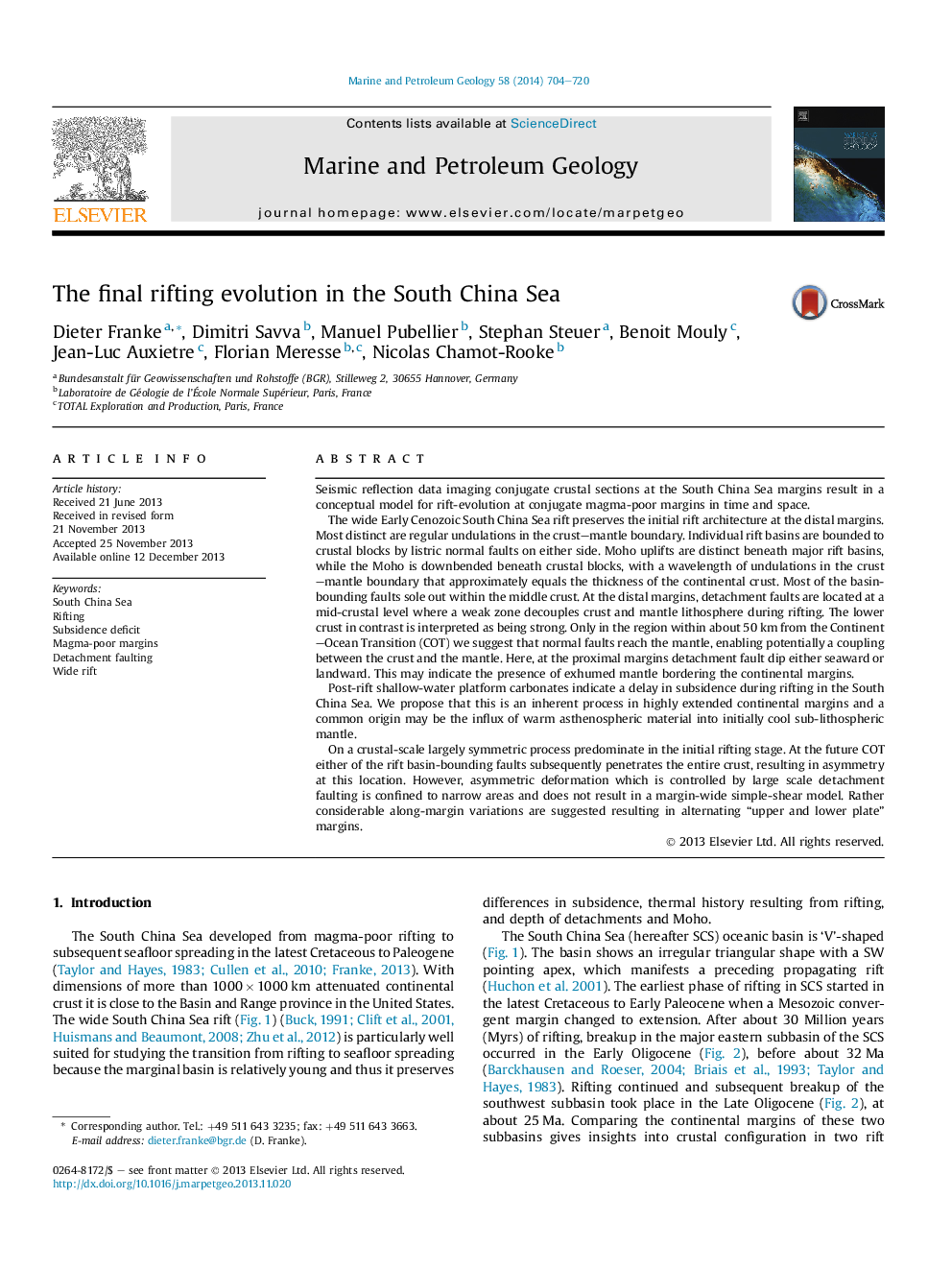| Article ID | Journal | Published Year | Pages | File Type |
|---|---|---|---|---|
| 4695596 | Marine and Petroleum Geology | 2014 | 17 Pages |
•Moho uplifts are distinct beneath major rift basins.•Post-rift shallow-water platform carbonates indicate a subsidence deficit during rifting.•Symmetric initial rifting becomes asymmetric at the future COT.•Along-margin variations are suggested resulting in alternating “upper and lower plate” margins.
Seismic reflection data imaging conjugate crustal sections at the South China Sea margins result in a conceptual model for rift-evolution at conjugate magma-poor margins in time and space.The wide Early Cenozoic South China Sea rift preserves the initial rift architecture at the distal margins. Most distinct are regular undulations in the crust–mantle boundary. Individual rift basins are bounded to crustal blocks by listric normal faults on either side. Moho uplifts are distinct beneath major rift basins, while the Moho is downbended beneath crustal blocks, with a wavelength of undulations in the crust–mantle boundary that approximately equals the thickness of the continental crust. Most of the basin-bounding faults sole out within the middle crust. At the distal margins, detachment faults are located at a mid-crustal level where a weak zone decouples crust and mantle lithosphere during rifting. The lower crust in contrast is interpreted as being strong. Only in the region within about 50 km from the Continent–Ocean Transition (COT) we suggest that normal faults reach the mantle, enabling potentially a coupling between the crust and the mantle. Here, at the proximal margins detachment fault dip either seaward or landward. This may indicate the presence of exhumed mantle bordering the continental margins.Post-rift shallow-water platform carbonates indicate a delay in subsidence during rifting in the South China Sea. We propose that this is an inherent process in highly extended continental margins and a common origin may be the influx of warm asthenospheric material into initially cool sub-lithospheric mantle.On a crustal-scale largely symmetric process predominate in the initial rifting stage. At the future COT either of the rift basin-bounding faults subsequently penetrates the entire crust, resulting in asymmetry at this location. However, asymmetric deformation which is controlled by large scale detachment faulting is confined to narrow areas and does not result in a margin-wide simple-shear model. Rather considerable along-margin variations are suggested resulting in alternating “upper and lower plate” margins.
